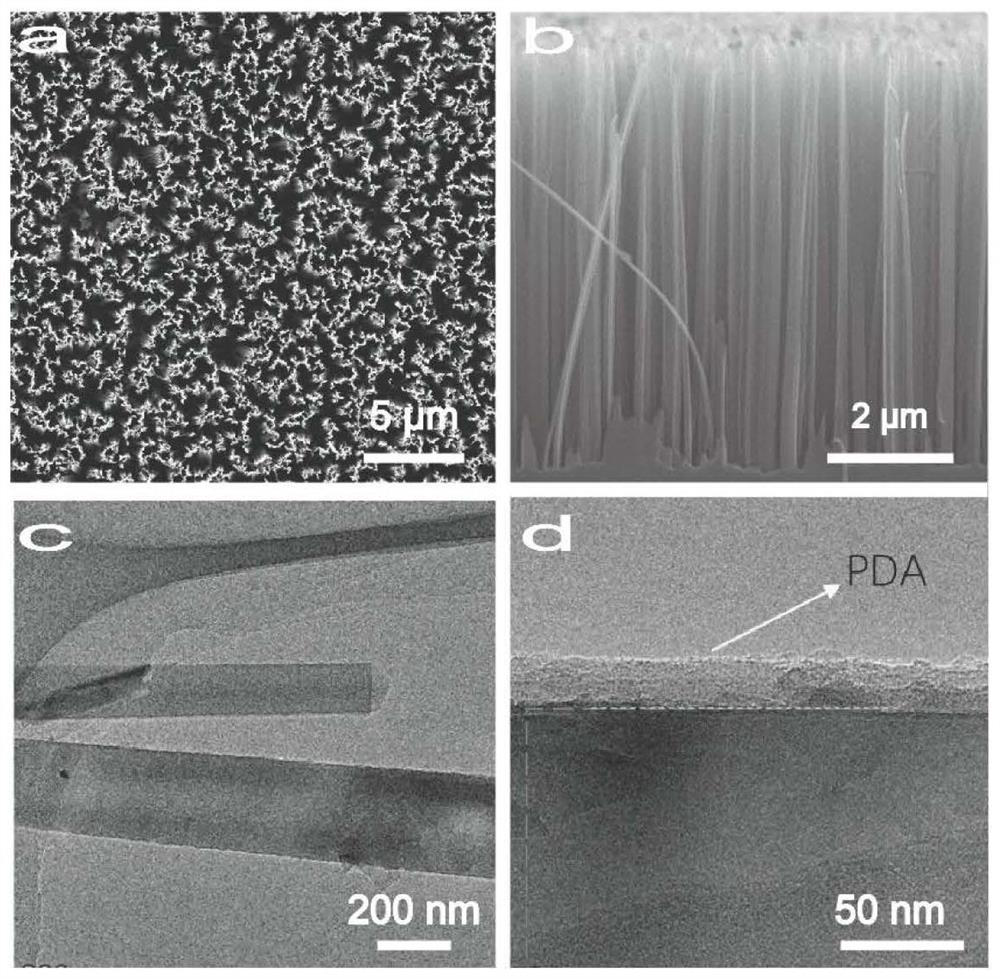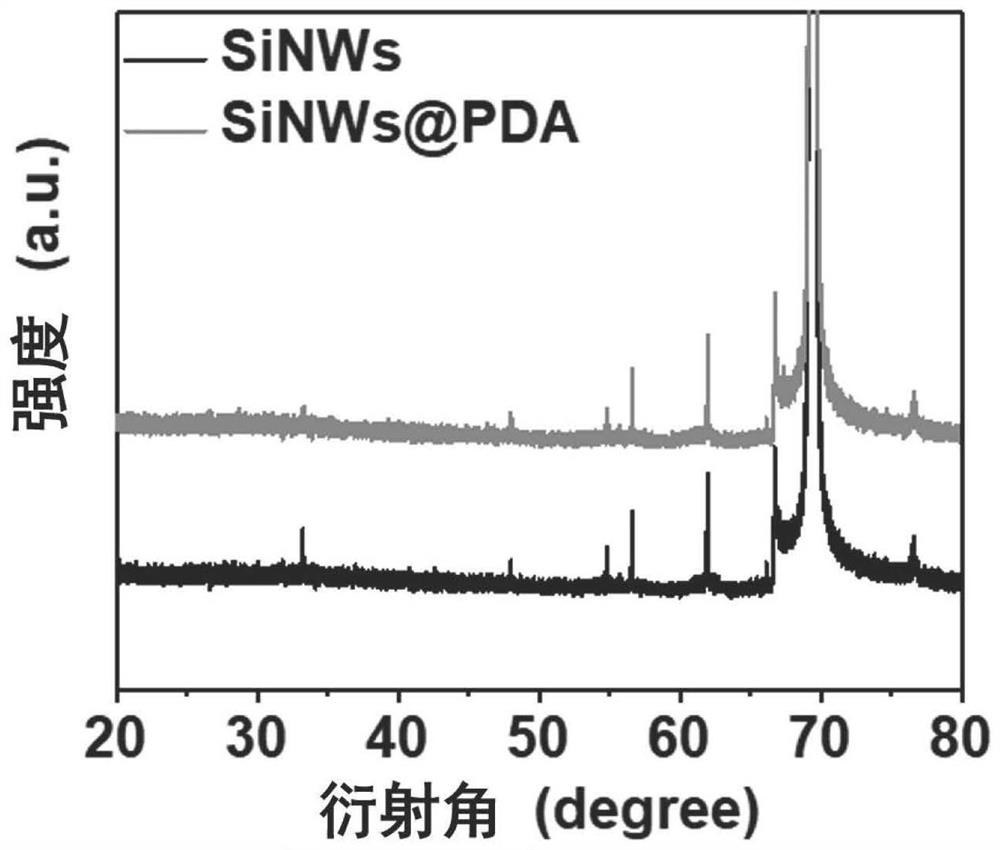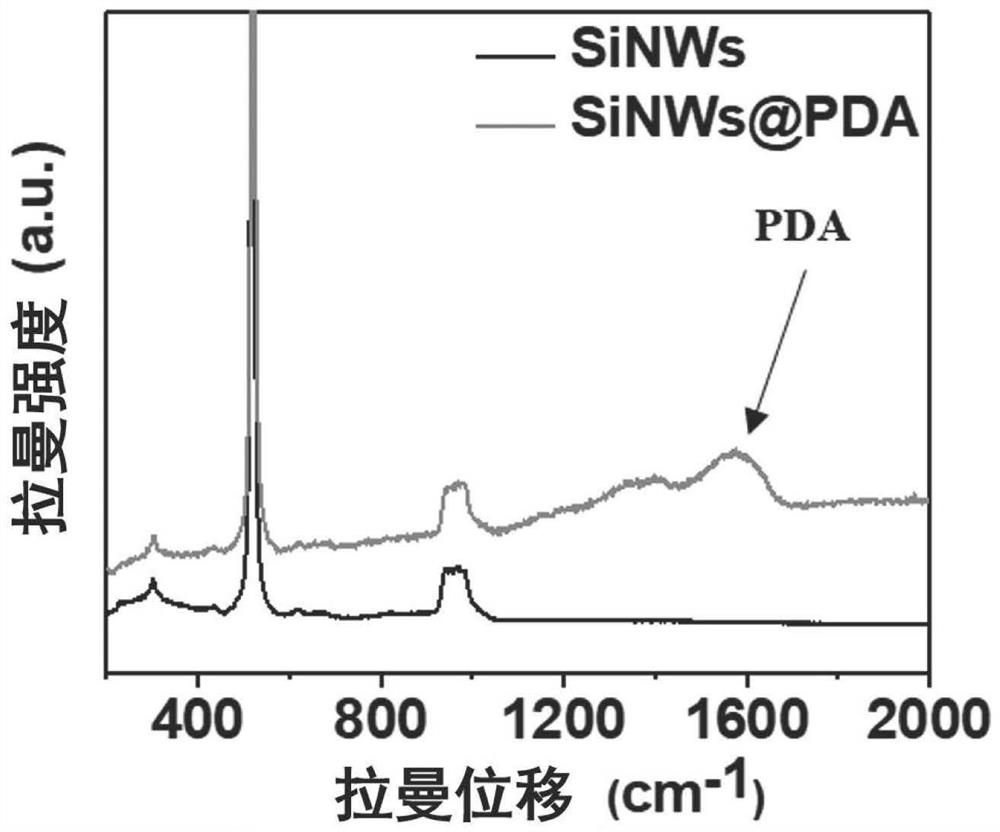Photoelectric immunosensor based on silicon nanowire array@polydopamine composite structure and preparation method
A silicon nanowire array and immunosensor technology, applied in the field of biosensors, can solve the problems of poor device stability and repeatability, cumbersome photoelectric immune electrode construction steps, affecting the detection sensitivity of sensors, etc., so as to improve the photocurrent response, Increase the photocurrent response and improve the effect of photocurrent
- Summary
- Abstract
- Description
- Claims
- Application Information
AI Technical Summary
Problems solved by technology
Method used
Image
Examples
preparation example Construction
[0032] A method for preparing a photoelectric immunosensor based on a silicon nanowire array@polydopamine composite structure, comprising the following steps:
[0033] S1. To prepare the silicon nanowire array electrode, cut the silicon wafer into a suitable size, clean it and face it up, put it into a container with an etching solution, etch it at a temperature of 15-45°C for 0.5-6h, and finally, place the The etched silicon nanowire array is rinsed and dried to obtain a silicon nanowire array electrode;
[0034]S2. Put the silicon nanowire array electrode prepared in step S1 into the prepared mixed solution and stir for 0.5-24 hours to obtain a polydopamine-wrapped silicon nanowire array, take out the silicon nanowire array electrode, wash it, and then blow it dry. Prepare silicon nanowire array@PDA electrode;
[0035] S3. Immerse the silicon nanowire array@PDA electrode prepared in step S2 in the antibody solution for 0.5-24h, take out the silicon nanowire array@PDA electr...
Embodiment 1
[0045] Polydopamine modified silicon nanowire arrays to construct photoelectric immunosensors, the specific steps are as follows:
[0046] (1) Etching silicon nanowire arrays on the surface of an n-type silicon wafer with a crystal plane type of : First, the silicon wafer is sequentially treated with acetone, absolute ethanol, deionized water, piranha solution, and water ultrasonic treatment , the ultrasonic treatment is ultrasonic cleaning three times in acetone, absolute ethanol, and deionized water cleaning solution, each time for 10 minutes, and ultrasonic cleaning in the piranha solution cleaning solution once for 30 minutes; then, the silicon wafer after cleaning is polished on the surface Put it into a container containing No. 1 etching solution for 1 minute, then take out the above-mentioned silicon wafer, put it into a container containing No. 2 etching solution, etch for 1 hour, and finally, the etched silicon wafer Rinse the sheet, dry it with nitrogen gas, and prep...
Embodiment 2
[0054] 1. The SiNWs@PDA electrode prepared in Example 1 is used as the working electrode, the platinum sheet and the silver chloride electrode are respectively the counter electrode and the reference electrode, 0.1M PBS is used as the electrolyte, the applied voltage is 1V, and the xenon lamp (power 150W, The power density is 100mW / cm2) as the light source, record the transient current curve, the result is as follows Figure 4 (a);
[0055] 2. The mouse cTnI monoclonal antibody / SiNWs@PDA electrode prepared in Example 1 was used as the working electrode, the platinum sheet and the silver chloride electrode were respectively the counter electrode and the reference electrode, 0.1M PBS was used as the electrolyte, and the applied voltage was 1V, xenon lamp (power is 150W, power density is 100mW / cm2) is light source, record transient current curve, the result is as follows Figure 4 (b);
[0056] 3. The BSA / mouse cTnI monoclonal antibody / SiNWs@PDA electrode prepared in Example 1 ...
PUM
| Property | Measurement | Unit |
|---|---|---|
| concentration | aaaaa | aaaaa |
Abstract
Description
Claims
Application Information
 Login to View More
Login to View More - R&D
- Intellectual Property
- Life Sciences
- Materials
- Tech Scout
- Unparalleled Data Quality
- Higher Quality Content
- 60% Fewer Hallucinations
Browse by: Latest US Patents, China's latest patents, Technical Efficacy Thesaurus, Application Domain, Technology Topic, Popular Technical Reports.
© 2025 PatSnap. All rights reserved.Legal|Privacy policy|Modern Slavery Act Transparency Statement|Sitemap|About US| Contact US: help@patsnap.com



